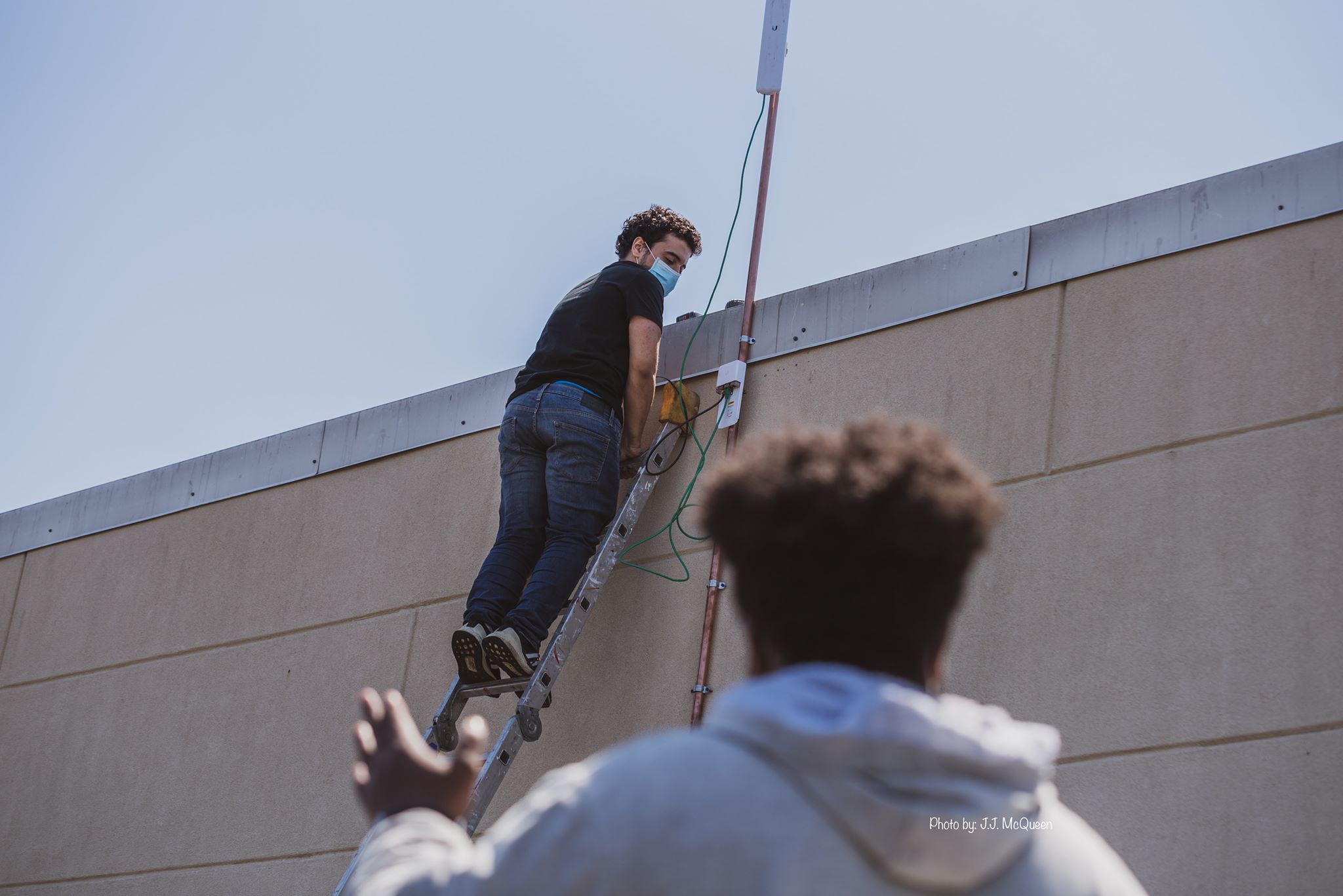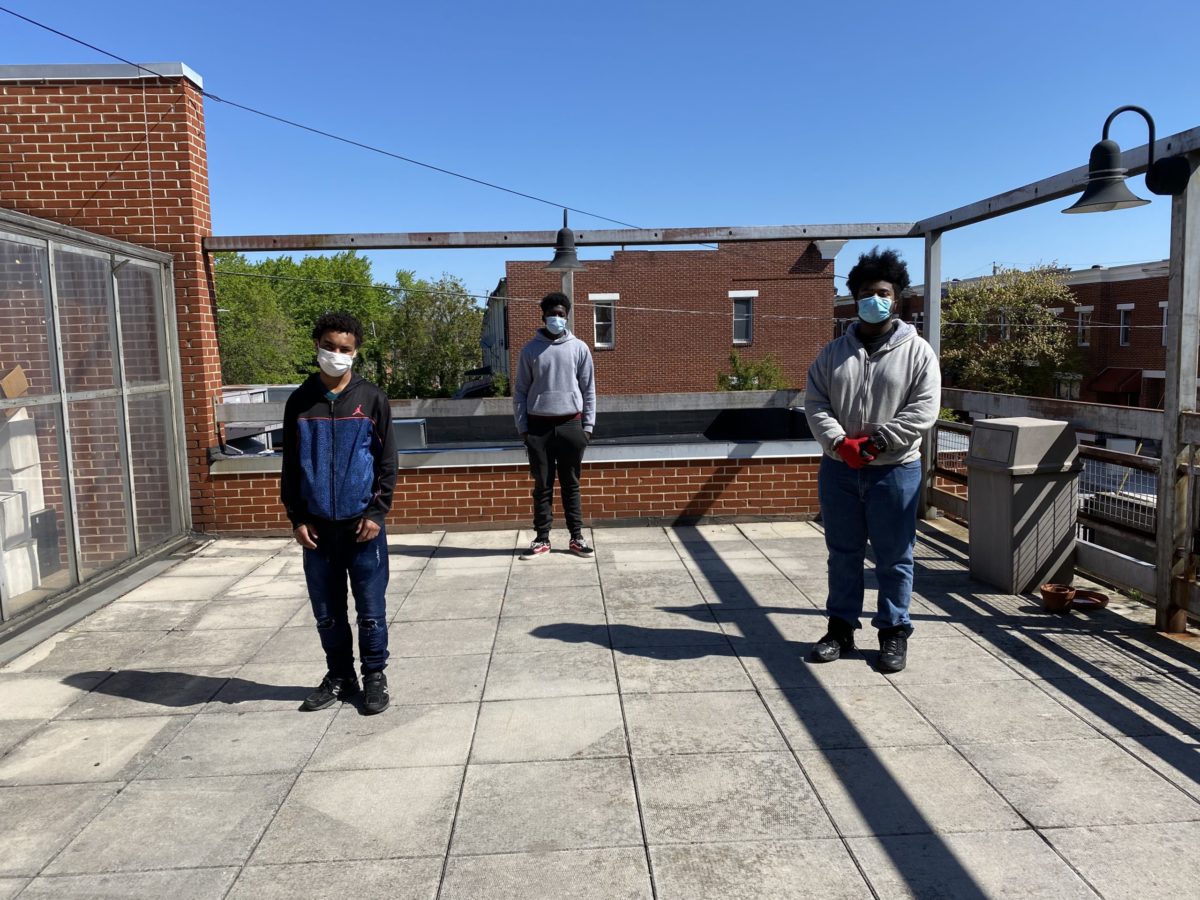From the roof of New Song Academy in Sandtown-Winchester, there’s a near-clear view of downtown Baltimore. As Rowdy Orb.it CEO Jonathan Moore noted on the morning of May 7, it’s a higher point than the ground on which the skyscrapers sit, which reasons that it would be a good place to broadcast to the world.
But that day, the focus was on getting a signal up and running that could reach the houses that surround the school, as a group of technologists and community organizations came together to install a mesh Wi-Fi network in the neighborhood.
It was a visible move aimed at closing the digital divide in a city that a new report shows has 40% of households lacking access to wireline broadband, and the disparities tend to cluster in the Black Butterfly. In Sandtown-Winchester, where the late Freddie Gray grew up, an analysis of data from the years prior showed that 50% of households lacked internet of any kind.
For a number of years now, digital access has been important to connect folks with jobs and education. In the pandemic, with school going remote and resources available via the web, it has become critical. And with the census mostly online this year, it also offers a way to stand up and be counted as a citizen.
“Now the internet is a need. It’s not even a choice not to have it,” said Esaiah Watson, who came out to help to install the network with Reservoir Hill residents Dayvon Cummings and Devin Mintz. As part of work with the nearby St. Francis Neighborhood Center, they joined in for the chance to get hands-on experience and, as Cummings put it, “to be able to put a smile on people’s faces.”
Working alongside Project Waves founder Adam Bouhmad and Internet Society DC chapter director Dustin Loup, the experience helped to train the three young people to install networks, so perhaps they can help to build more community Wi-Fi in the future.
Setting up three nodes, the group was able to broadcast a 360-degree signal that reaches a half-mile around the school. After several days of testing, it is now offered for free.

The partnership came together with a recognition that it could make a difference for the school from principal Doug Fireside and the school’s community school coordinator, Juan Nance of Elev8 Baltimore. New Song Community Learning Center, the nonprofit that oversees the school, was willing to fund the effort to connect. Moore and Bouhmad are part of DigiBmore, a collaborative that is combining forces to redistribute devices for students and set up Wi-Fi. Bouhmad, who with Project Waves also set up community Wi-Fi at the Baltimore Robotics Center in Southwest Baltimore and in the Sharp-Leadenhall neighborhood, is also looking to expand organizing with Internet Society locally. It can be a way to engage the broader tech community, he said.
It’s an example of how an anchor institution can play a role in expanding internet access. Baltimore City Public Schools officials have said that community partnerships are a part of their effort to expand broadband access for students.
As school buildings like New Song closed for at least the rest of this school year, students in the area will need connectivity to classes. With a network, the building can become a central point of distribution for students, even if it’s closed. And it can help members of the community who don’t have children in school get online in the process to access not just work but also telehealth or unemployment benefit applications that are now digital.
Moore said it’s building with a vision of continuing to train residents, and becoming a worker-owned cooperative.
“The people that live here and work here are going to be able to address their needs quickly,” Moore said.







